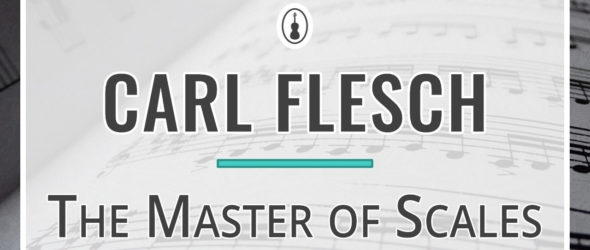Carl Flesch was a legendary violin teacher who created a scale system used by most classical violinists today. His books and teachings have had a huge influence on modern violin playing because they directly help us learn difficult repertoire.
If you’re advancing on the violin and would like to dive into scales, read on to learn about Flesch’s Scale System, and how you can begin to incorporate it into your practice routine!
Life and Career of Carl Flesch
Hungarian violinist Carl Flesch was born on October 9, 1873. He began playing the violin at 5 years old. He was taken to Vienna to study the instrument further at age 10, and at 17, he began studying at the Conservatoire de Paris. He taught at the Curtis Institute of Music from 1924-1928. After, he settled in Berlin but was then driven out by the Nazi regime. He lived in Switzerland until his death in 1944.
As a performer, he was known as both a soloist and as a chamber musician. He published books on the violin and is best known as a teacher. His treatise “The Art of Violin Playing” included his Scale System in just C Major, but he soon realized that violinists would benefit from a book that included scales in all 24 keys. The official Scale System was created shortly after.
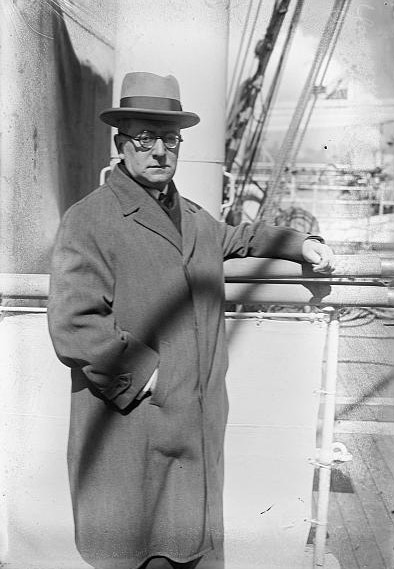
Scale System: Scale Exercises in All Major and Minor Keys for Daily Study
Carl Flesch’s Scale System includes scales on one string, three-octave scales, and exercises for double stops and harmonics. The finger patterns taught in this system pop up throughout the violin repertoire, which makes this an almost essential warm-up for a serious classical violinist.
The book includes scales in all major and minor keys, progressing through the circle of fifths beginning with C Major. Flesch’s intention was for a violinist to work on one key every day, essentially working through the entire book in about a month’s time.
This can feel daunting, once you actually take a look at the exercises. However, once you understand how the music is organized, everything makes a lot more sense!
Let’s take a look at the two editions of the Scale System.
Original Version: A Supplement to Book 1 of The Art of Violin Playing
The original version is just Flesch’s Scale System in all 24 keys. It includes his fingering suggestions. This is a great place to get started!
You can purchase this edition on Amazon:
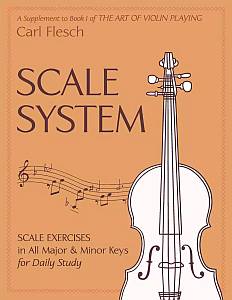
Scale System: Scale Exercises
in All Major and Minor Keys for Daily Study
Support us for more FREE content No extra costs for you Recommended by Violinists
Revised Version by Max Rostal: Extra Exercises
In 1970, one of Flesch’s former students, Max Rostal, published a revised edition of the Scale System. This edition includes both Flesch and Rostal’s suggested fingerings (Flesch’s fingerings on top of the notes, Rostal’s below). There are also about 20 extra exercises added to the end of the book.
You can purchase this edition here:
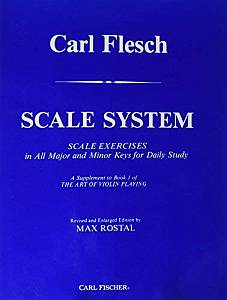
By Max Rostal Carl Flesch Scale System:
Scale Exercises in All Major and Minor Keys for Daily Study (Revised Edition)
Support us for more FREE content No extra costs for you Recommended by Violinists
Want to try the Scale System at no cost? It is available for members of Julia’s Violin Academy in the Resources section.
When Should I Start Flesch Scales?
When you first open Flesch’s book, you might feel really overwhelmed by the sheer amount of notes on each page. These scales aren’t meant for beginners, and you should already know how to play in the third and fifth positions before learning this system. You’ll find it more manageable if you can play even higher than 5th position.
A lot of the finger patterns Flesch used in his book were inspired by Otakar Ševčík’s Violin Studies. If you’ve played through some of Ševčík’s exercises, you might notice some similar finger patterns.
How is the Flesch Scale System Laid Out?
Each scale study in the book is divided into sections.
- Sections 1-4: one octave scales on each string
- Section 5: three-octave scale, arpeggios, broken thirds, chromatic scale
- Section 6: three-octave scale and arpeggios, broken thirds, and chromatic scale all in thirds
- Section 7: three-octave scale and arpeggios, broken thirds, and chromatic scale all in sixths
- Section 8: three-octave scale and arpeggios, broken thirds, and chromatic scale all in octaves
- Section 9: three-octave scale and arpeggios, broken thirds, and chromatic scale all in fingered octaves
- Section 10: three-octave scale in tenths
- Section 11: three-octave scale using artificial harmonics
- Section 12: chords with artificial harmonics
How to use Carl Flesch Scale System?
Getting Started
Flesch’s book begins with C Major (no sharps or flats) and works its way around the circle of fifths. This makes sense from a theory standpoint, but it’s not the easiest path of learning scales on the violin.
To make things easier, choose a less difficult starting scale, like D Major. D lays nicely on the violin fingerboard and is probably one of the first one-octave scales you learned.
I’d recommend skipping Sections 1-4 at first and starting with Section 5, three-octave scales. This way, your left hand will start in a lower position, and then work its way up the fingerboard. Section 5 also includes arpeggios, broken thirds, and a chromatic scale. Add just one new concept in at a time (maybe try one or two new things a day), and you’ll be able to get through it!
Continuing as a Warmup
I find it helpful to choose a scale that corresponds to the repertoire I’m learning. For example, if I’m learning a piece in A Major, I’ll go to the A Major section of the book to warm up with the same (or at least similar) hand frame that I’ll need in my repertoire.
It can feel difficult to use this book on your own. If you have a teacher, they can help walk you through it. As a member of Julia’s Violin Academy, you get that help as well as tips for improving your playing from a professional violin player and teacher!
Urstudien
Before Carl Flesch published his scale system, he created Urstudien, a series of exercises for violinists to maintain their technique. These were exercises he used himself while touring, and then shared with his students. Then they encouraged him to publish it for all violinists.
Some exercises focus on the left hand (and require no right hand), and others focus on the bow, helping violinists feel physically secure in many different aspects of their playing.
Urstudien is shorter and a bit more approachable than Flesch’s Scale System. You can download it for free here – give it a try!
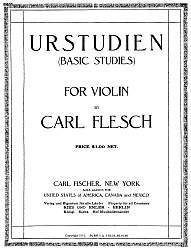
Carl Flesch – Urstudien
Free Violin Sheet Music
Conclusion
Hungarian violinist Carl Flesch made great advancements in the violin world through performing, teaching, and publishing. Thanks to him, we have exercises that directly help us learn difficult repertoire in an easier way. It’s hard to imagine a world of classical violin without him!
